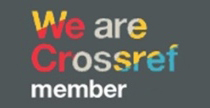MAKNA DAN PERUBAHAN RUPA BONEKA WAYANG SEMAR PADA WAYANG JEKDONG JAWA TIMUR
DOI:
https://doi.org/10.51804/deskovi.v7i1.16334Keywords:
Culture of Arek, Characteristics, Jekdong Puppet, SemarAbstract
Indonesia merupakan sebuah negara besar dengan beragam suku dan kebudayaan yang tersebar dari Sabang hingga Merauke. Berbeda daerah dan suku maka berbeda pula kebudayaan yang ada termasuk artefak budaya yang ada di masyarakat Indonesia. Sebuah artefak budaya senantiasa mencerminkan nilai-nilai Masyarakat pembuatnya. Hal ini tidak terkecuali dalam kesenian wayang Jekdong sebagai hasil karya Masyarakat budaya Arek, Masyarakat budaya Arek sebagai sub-budaya provinsi Jawa Timur memiliki kekhasan budaya dan salah satu produk dari budaya arek adalah wayang Jekdong dimana boneka wayang Jekdong Semar menjadi cermnan akan nilai-nilai budaya Arek. Penelitian ini melibatkan penelusuran boneka wayang Semar dalam tiga spesimen yang berbeda dari tiga tahun pembuatan. Hal tersebut dalam rangka mengulik nilai cerminan masyarakat budaya Arek yang dipertahankan. Metode penelitian yang digunakan adalah observasi spesimen wayang Jekdong tiga periode produksi yang berbeda dengan menggunakan gaya wayang Jekdong Porongan koleksi Ki Wardono dan salah satu sumber yang tidak dapat disebutkan. Perbedaan-perbedaan yang tampak pada boneka wayang Semar dipengaruhi oleh beberapa faktor utama yang melatar belakangi. Faktor tersebut antara lain adalah faktor karakteristik budaya Arek yang cenderung lugas dan faktor pengaruh nilai-nilai islam.
Indonesia is a large country with diverse ethnicities and cultures spread from Sabang to Merauke. Different regions and ethnicities have different cultures, including cultural artifacts in Indonesian society. A cultural artifact always reflects the values of the community that creates it. This is no exception in the art of Jekdong puppetry, a product of the cultural community of Arek. Arek, as a subculture of East Java province, has its own cultural distinctiveness, and one of the products of Arek culture is the Jekdong puppet, where the Jekdong Semar puppet serves as an embodiment of Arek cultural values.
This research involves the examination of the Semar puppet in three different specimens from three different production years. This is done to explore the values reflecting the Arek cultural community that are preserved. The research method used is the observation of Jekdong puppet specimens from three different production periods, using the Jekdong Porongan puppet style collection of Ki Wardono and another source that cannot be mentioned. The differences observed in the Semar puppet are influenced by several main underlying factors. These factors include the characteristics of Arek culture, which tend to be straightforward, and the influence of Islamic values
Downloads
References
Al Hadhrami, S. (2015). Terjemah Safinatun Najah. Mutiara Ilmu.
Anderson, B. R. O. (2008). Mitologi dan Toleransi Orang Jawa. Jejak.
Ayuswantana, A. C., Sachari, A., & Irfansyah, I. (2020). Pengaruh Nilai Islam pada Visual Pakaian Dewa dan Resi Boneka Wayang Jekdong Jawa Timur. ANDHARUPA: Jurnal Desain Komunikasi Visual & Multimedia, 6(1), 32–42. https://doi.org/10.33633/andharupa.v6i1.2852
Barthes, R. (2006). Mitologi. Kreasi Wacana
COLEMAN, S., & GROVER, R. (2006). The anatomy of the aging face: Volume loss and changes in 3-dimensional topography. Aesthetic Surgery Journal, 26(1), S4–S9. https://doi.org/10.1016/j.asj.2005.09.012
Damayanti, N., & Suadi, H. (2007). Ragam dan Unsur Spiritualitas pada Ilustrasi Naskah Nusantara 1800-1900-an. ITB Journal of Visual Art and Design, 1(1), 66–84. https://doi.org/10.5614/itbj.vad.2007.1.1.6
Darmaprawira, S. (2002). WARNA: Teori dan Kreativitas Penggunanya. Penerbit ITB.
Heatherton, T. (2000). The Social Psychology of Stigma. The Guilford Press.
Hoop, V. der. (1949). Ragam-ragam Perhiasan Indonesia. Koninklijk Bataviaasch Genootschap Van Kunsten en Wetenschappen,.
Jauhari, E. (2016). KRITIK DALAM MASYARAKAT BUDAYA AREK DI SURABAYA: kajian Sosiopragmatik terhadap Pemakaian Bahasa sebagai Sarana Kontrol Sosial. Universitas Sebelas Maret.
Jenks, C. (2013). CULTURE: Studi Kebudayaan. Pustaka Pelajar.
Kartika, D. S. (2007). Budaya Nusantara?: Kajian Konsep Mandala dan Konsep Triloka/Buana terhadap Pohon Hayat pada Bati Klasik. Rekayasa Sains.
Kartika, S. D. (2007). Budaya Nusantara Kajian Konsep Mandala dan Konsep Triloka Terhadap Pohon Hayat pada Batik Klasik. Rekayasa Sains.
Kawuryan, M. W. (2006). Tata Pemerintahan Negara Kertagama Kraton Majapahit. Panji Pustaka.
Lombard, D. (2000). Nusa Jawa: Silang Budaya Bagian III. Gramedia.
Mattesi, M. (2008). Force: Character Design from Life Drawing: Character Design from Life Drawing (Force Drawing Series). Routledge.
Munandar, A. Aris. (2011). Catuspatha Arkeologi Majapahit. Wedatama Widya Sastra.
Musbikin, I. (2010). Serat Dewa Ruci (Misteri Air Kehidupan). Diva Press.
Nettleton, Sarah. , W. J. (1998). The Body in Everyday Life. Routledge.
Noerhadi, Inda. C. (2012). Busana Jawa Kuna. Komunitas Bambu.
Paudel, S., Jackson, T. A., Mansfield, S., Ero, M., Moore, A., & Marshall, S. D. G. (2023). Use of pheromones for monitoring and control strategies of coconut rhinoceros beetle (Oryctes rhinoceros): A review. Crop Protection, 174, 106400. https://doi.org/10.1016/j.cropro.2023.106400
Piliang, Y. A. (2019). Semiotika dan Hipersemiotika: Kode, Gaya, dan Matinya Makna (5th ed.). Cantrik Pustaka.
Spradley, P. J. (2016). The Ethnographic Interview. Waveland Press.
Stillman, Y. K. (2003). Arab dress?: from the dawn of Islam to modern times. Brill.
Sumardjo, J. (2014). Estetika Paradoks. Kelir.
Surwedi. (2014). Jaman Antaraboga Layang Kandha Kelir. Buku Litera.
Susanto, Sewan. (1974). BATIK NUSANTARA; KERAJINAN BATIK. Balai Penelitian Batik Dan Kerajinan.
Syam, N. (2005). Islam Pesisir. LKiS.
Timoer, S. (1988). Serat Wewaton Pedhalangan Jawi Wetanan: Jilid I. Balai Pustaka.
Yudoseputro, W. (1986). Pengantar Seni Rupa Islam Di Indonesia. Angkasa.
Downloads
Published
How to Cite
Issue
Section
License
Copyright (c) 2024 DESKOVI : Art and Design Journal

This work is licensed under a Creative Commons Attribution 4.0 International License.
With the receipt of the article by DADJ Editorial Board and the decision to be published, the copyright regarding the article will be transferred to DADJ. The copyright transfer form can be downloaded here.
DADJ has the right to multiply and distribute the article and every author is not allowed to publish the same article that was published in this journal.

DESKOVI: Art and Design Journal is licensed under a Creative Commons Attribution 4.0 International License.
Under the following terms:
Attribution — You must give appropriate credit, provide a link to the license, and indicate if changes were made. You may do so in any reasonable manner, but not in any way that suggests the licensor endorses you or your use.






